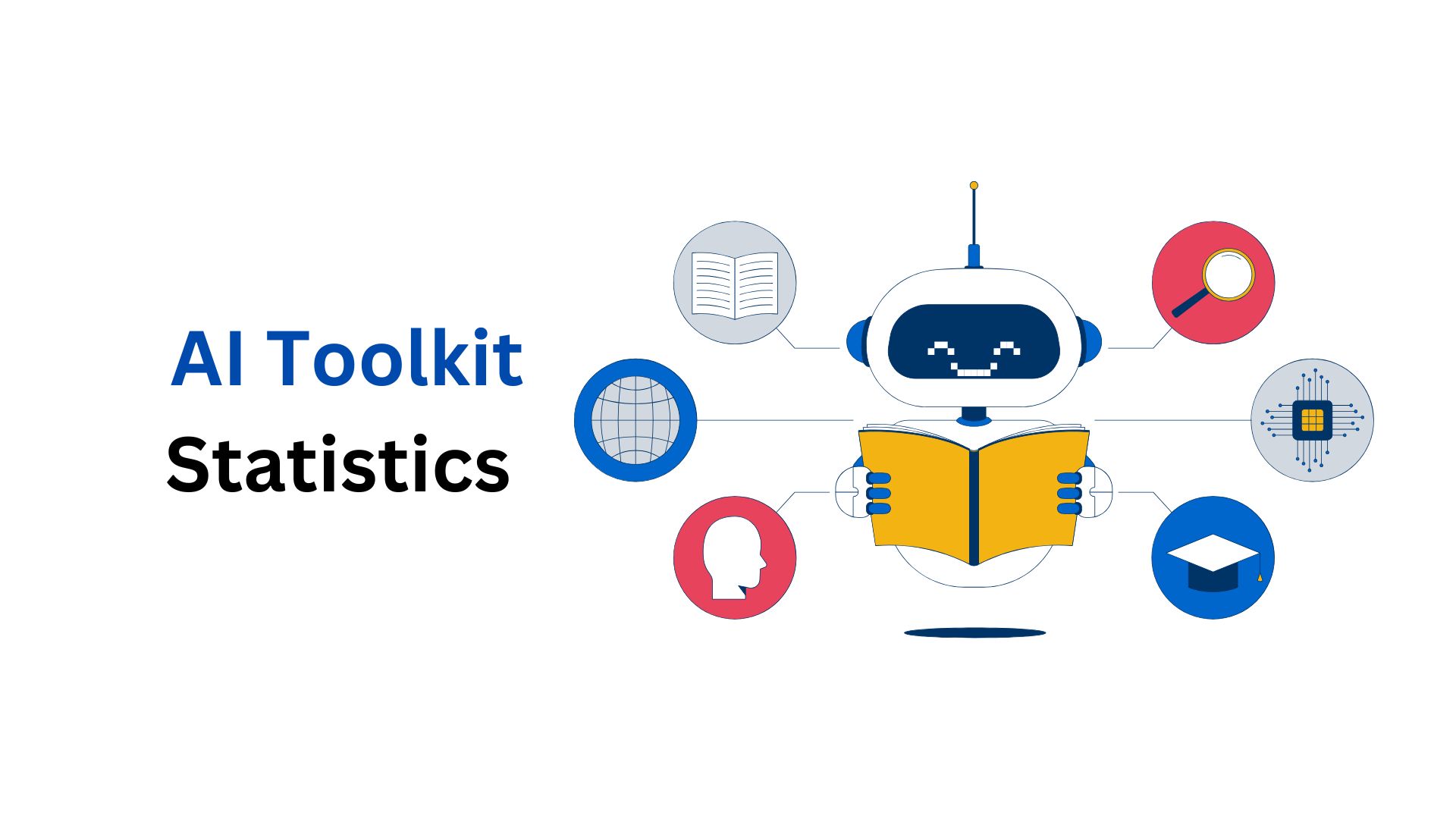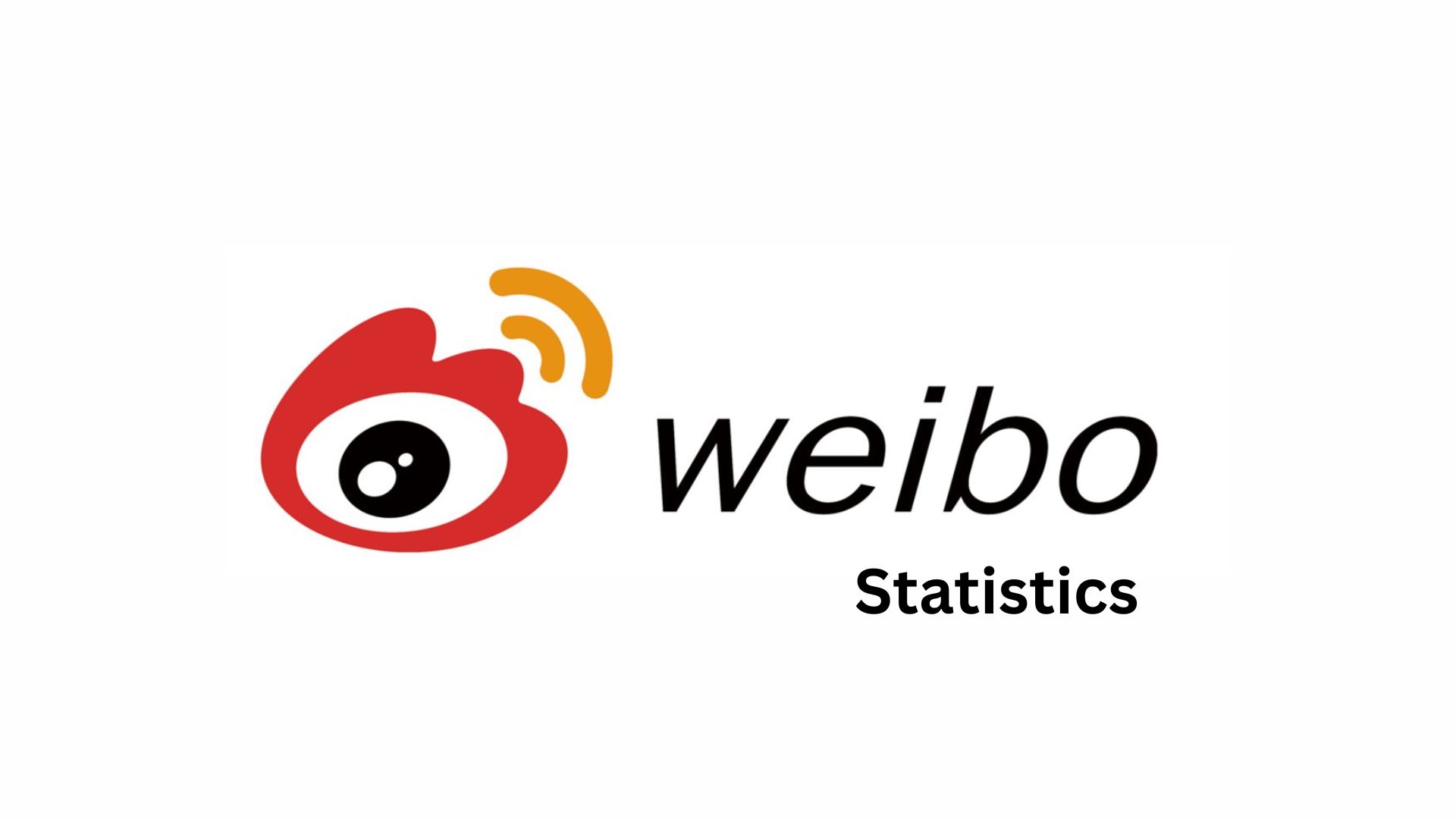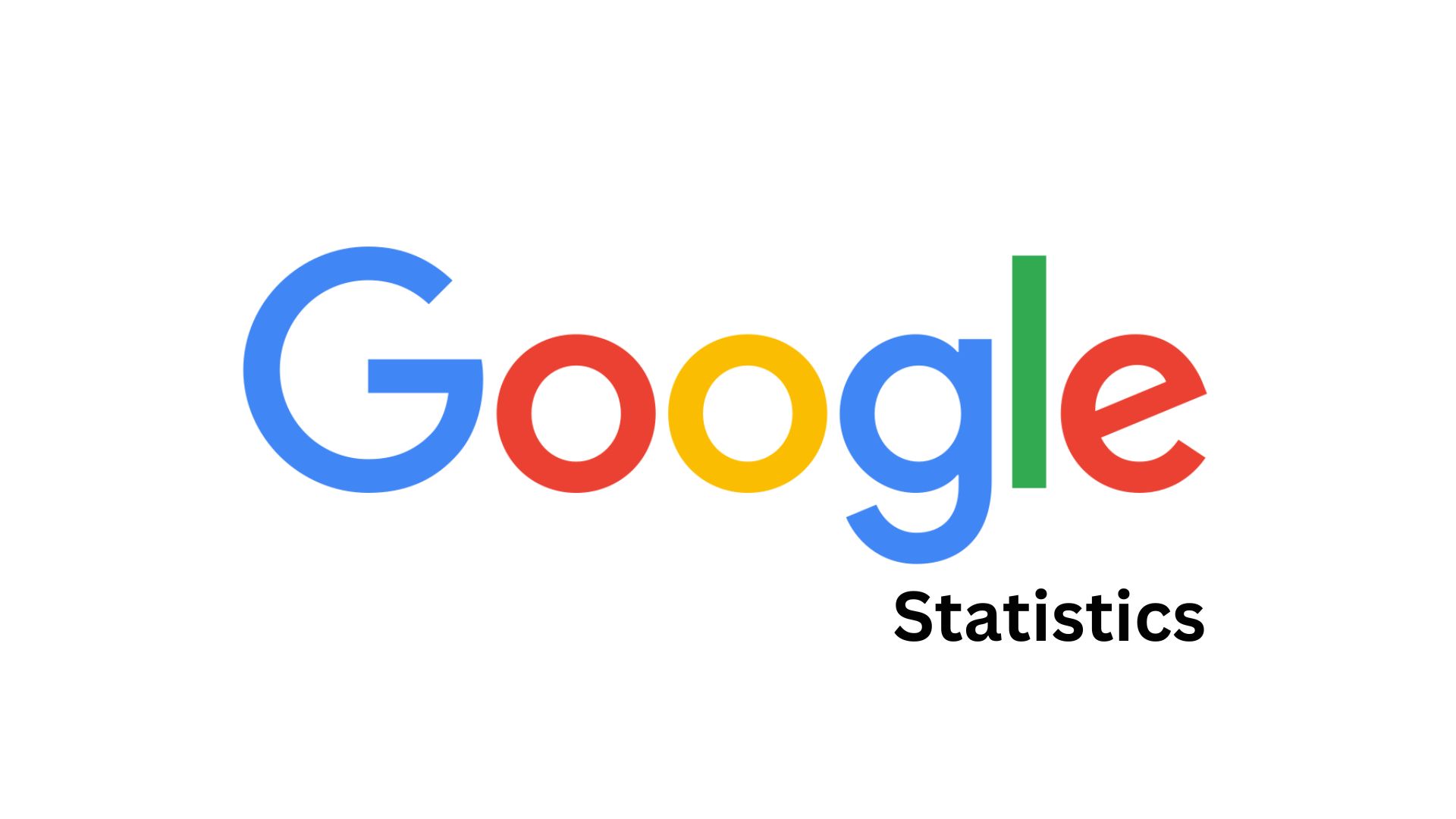DJI Statistics By Usage, Sales, Revenue and Facts (2025)
Updated · Oct 23, 2025
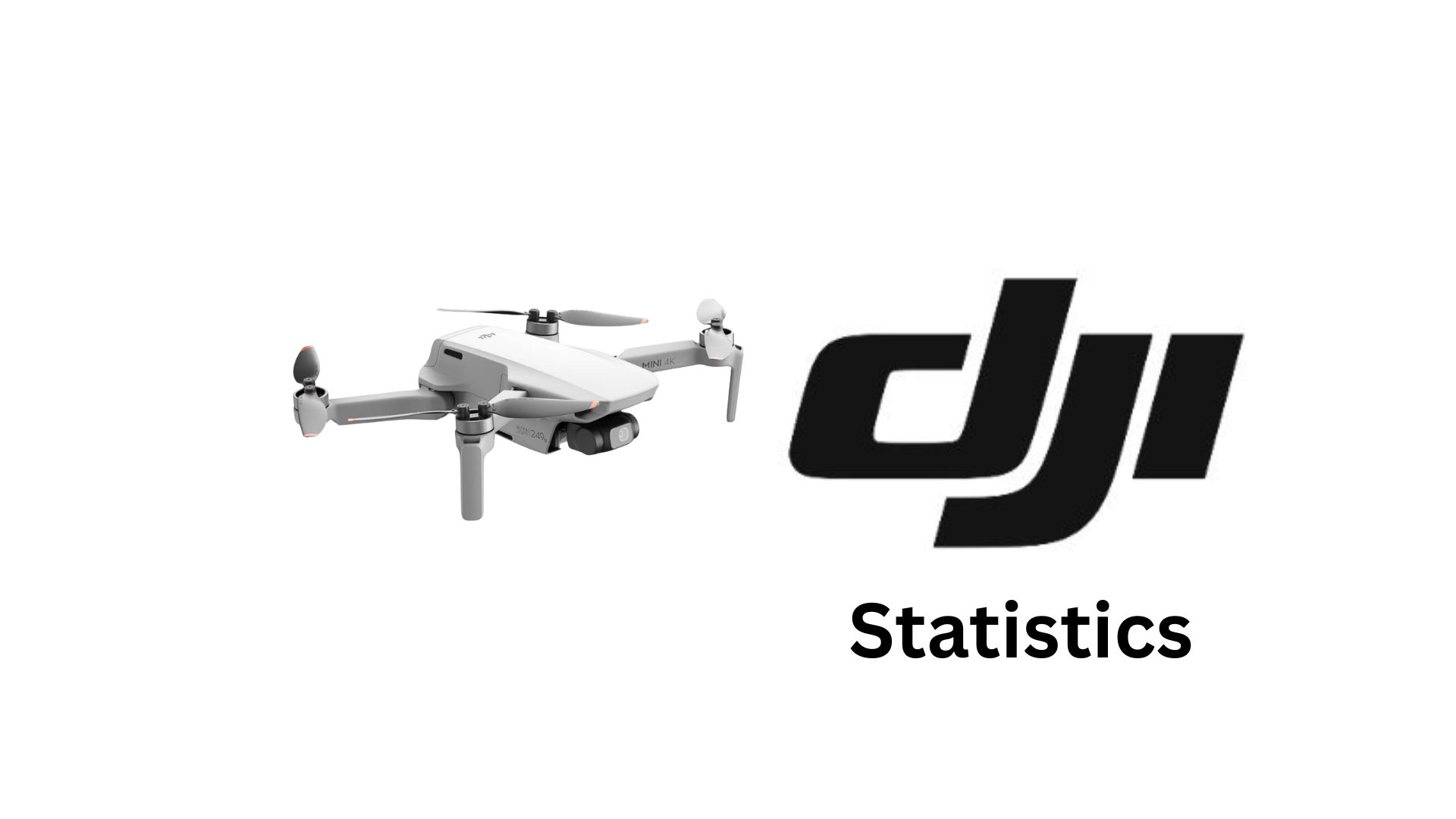
Table of Contents
- Introduction
- Editor’s Choice
- General DJI Statistics
- DJI Statistics by Market Size and Sales Analysis
- DJI Usage Statistics
- DJI Usage By Industry
- Drone Market Size
- Top 10 Drone Manufacturers In US
- Dow Jones Industrial Average Statistics by Monthly Summary (2025)
- Global Agriculture Drone Manufacturers
- DJI Drones Price Statistics by Model
- DJI’s Website Traffic Statistics
- By Country
- By User Demographics
- By Marketing Channels Distribution
- By Social Media
- By Device
- DJI Products Launch Analyses
- Conclusion
Introduction
DJI Statistics: DJI (Dà-Jiāng Innovations) is a Chinese technology company founded by Frank Wang (Wang Tao) on January 18, 2006, and is headquartered in Shenzhen, Guangdong, China. DJI is the world’s most influential drone maker, shaping how consumers and professionals capture the sky. The company blends hardware, software, and imaging to deliver compact, stable, and intelligent flight. Its lineups from Mini and Air to Mavic and Inspire pair long battery life with multi-direction obstacle sensing, precise GPS, and crisp 4K/8K cameras.
Beyond filmmaking, DJI powers real-world work: agriculture spraying, site mapping, inspection, public safety, and environmental monitoring. An expanding ecosystem of DJI Fly and Pilot apps, enterprise features, payload and mobile SDKs, and tools like Terra that support planning, automation, and data management. Accessories, ND filters, microphones, and gimbals complete end-to-end storytelling kits. DJI also advances compliance through geofencing, Remote ID, and customizable restrictions for enterprise fleets.
This article explores DJI’s portfolio, core technologies, strengths, limitations, and buying tips that help readers choose the right aircraft, understand regulations, and get safer, smoother, more cinematic results for work, play, and everything in between.
Editor’s Choice
- The market size of the global drone market is estimated to reach around USD 40.5 billion by the end of 2025, up from USD 36.8 billion in 2024.
- According to Loyalty Drone Research, DJI controls about 80% of the U.S. drone market and 60% of the global market in 2025.
- As of 2025, DJI owns approximately 70% of the global civilian drone market.
- By the end of 2024, more than 400,000 DJI agricultural drones were being used worldwide, representing a 90% increase from 2020.
- DJI dominates the U.S. drone market with a 76.8% share, far ahead of every competitor.
- In the agricultural drone market of 2024, DJI captured the highest market share of 30%.
- In Europe, the high-end DJI Inspire 3 model costs € 14,999 (approximately USD 16,198.92).
- As of September 2025, the total number of visits to dji.com accounted for 13.6 billion, down by 3.15% from the previous month.
- At the same time, China accounted for the highest share of the DJI’s website, at 16.17%, representing a 6.77% decrease from the previous month.
- The total number of DJI’s website users aged 25 to 34 years accounted for the highest share, at 28.28%, followed by those aged 35 to 44 years at 21.14%.
- The highest traffic sources for dji.com in the same period as above were captured by organic search with a share of 50.49%.
- On the DJI’s website, the highest social network traffic was accounted for by YouTube, with a share of 82.08%, followed by Facebook with 6.92%.
General DJI Statistics
- According to available data, DJI was founded in 2006 by Frank Wang, who was still a university student at the time. The company started in Shenzhen, Guangdong, known as China’s Silicon Valley, and later became a global name in drone manufacturing.
- DJI quickly transformed the dream of flying unmanned aerial vehicles into reality by around 2010, giving consumers affordable access to drones and aerial imaging tools.
- The company now holds over 70% of the global drone market, supported by its expertise in aerial photography, videography, stabilizers, propulsion systems, and robotics technology.
- Frank Wang was only a college student when he established the company, having earlier won a major Asian-Oceanian robotics competition. His dedication and early funding of about $35,000 helped him develop the first drone prototypes and control components that laid the foundation for DJI’s growth.
- In 2009, DJI gained attention by flying one of its prototype drones around the peak of Mount Everest, showcasing its technology and engineering capabilities to the world.
- The company faced serious financial and management challenges in its early years, but a $90,000 investment from Wang’s family friend, Lu Di, saved it from collapse. Di also helped manage the company’s finances, setting DJI on a more stable path.
- Around 2010, DJI began expanding internationally. Frank Wang partnered with his former school friend, Swift Xie Jia, to strengthen the marketing strategy focused on Western markets. This led to the creation of DJI North America, managed by Colin Guinn, to cater to U.S. drone enthusiasts.
- In 2013, DJI launched the Phantom, which became a breakthrough in consumer drones. However, disputes between Wang and Guinn over business control led to legal challenges before they were settled.
- In 2015, DJI introduced the Phantom 3, a drone equipped with live-streaming features that revolutionized aerial videography. This model significantly increased DJI’s sales and positioned it as the world’s top drone brand.
- Recognizing the importance of imaging, DJI continued enhancing its cameras and flight systems. By 2017, its technological excellence earned it the 69th Annual Technology & Engineering Emmy Award for contributions to drone cinematography used in shows such as Game of Thrones and American Ninja Warrior.
- As of recent reports, DJI continues to dominate the global drone market with a 70% share. The company’s products are now used in fields such as agriculture, education, filmmaking, and surveillance, showing how drones have evolved into essential tools across multiple industries.
- In 2022, DJI’s total sales were about $30.6 billion, with estimates suggesting that revenues may surpass $55 billion by 2030, reflecting continued growth driven by global demand and innovation in drone applications.
DJI Statistics by Market Size and Sales Analysis
- According to Loyalty Drone Research, DJI controls about 80% of the U.S. drone market and 60% of the global market in 2025.
- In 2024, the annual revenue of DJI accounted for USD 3.5 billion.
- Viewpoints reports that DJI’s products and services contribute to approximately USD 116 billion in economic value and support nearly 450,000 jobs across the United States.
- As of 2025, DJI owns approximately 70% of the global civilian drone market, down from 74% in 2024, according to BusinessWire reports.
- According to Wikipedia reports, as of June 2024, DJI accounted for over 90% of the global consumer drone market.
- According to the Coolest Gadget report analysis, in 2023, DJI ranked first in the global drone industry, holding a market share of 79%.
- At the same time, overall shipments were more than 2.4 million units worldwide.
- Meanwhile, in 2024, DJI was holding a market share of 54%, and in the U.S. market, it was 80%.
- Meanwhile, the installed base of connected commercial drones reached 2.8 million units.
- By the end of 2024, around 400,000 DJI agriculture drones were in use, representing an increase of 90% from 2020.
DJI Usage Statistics
- As of 2024, DJI reported that drones had helped save over 1,000 people worldwide.
- Approximately 35% of our DJI user base utilises DJI GO and DJI GO 4; we estimate that they have flown a total of 27.5 million flights.
- A report published by Viewpoints shows that in the U.S., during 2019, DJI drones flew 31.6 million flights, based on telemetry from almost 35% of users.
- Based on the full sample, drones in the U.S. are estimated to make approximately 87.8 million flights annually, totalling over 10 million flight hours.
- According to DJI Media Centre, by mid-2024, more than 300,000 DJI farming drones were in use around the world, treating over 500 million hectares of farmland.
- These drones helped to save around 210 million tons of water, also reduced CO₂ emissions by about 25.72 million tons, and cut pesticide use by nearly 47,000 tons.
DJI Usage By Industry
- By the end of 2024, more than 400,000 DJI agricultural drones were being used worldwide, representing a 90% increase from 2020.
- As reported by Dronelife, these drones helped spray and monitor over 500 million hectares of farmland, saving 222 million tons of water and cutting down 30.87 tons of CO₂.
- In the U.S. public safety sector, DJI drones are the most widely used, holding over 90% of the market share.
- Globally, DJI dominates consumer drone cameras with a market share of more than 90%, mostly used by filmmakers, photographers, and live-event professionals.
- In the construction industry, drones from DJI are projected to expand from USD 4.8 billion in 2023 to USD 6.2 billion by 2030.
Drone Market Size
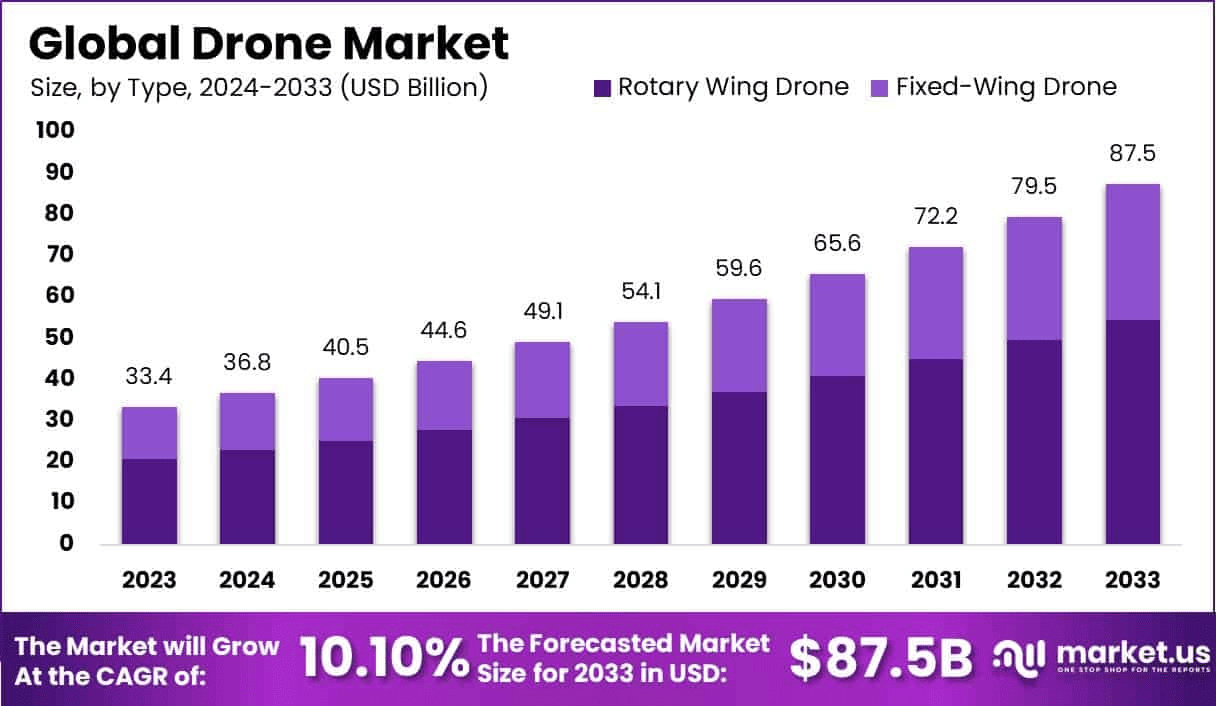
- The global drone market is anticipated to reach USD 95.4 billion by 2034, growing from USD 36.4 billion in 2024, registering a CAGR of 10.1% during 2025–2034.
- In 2024, the Asia-Pacific region held a leading position with more than 40.2% of the total share, generating USD 14.63 billion in revenue. Countries such as China, Japan, and India have adopted drones rapidly across both commercial and defense sectors.
- The Rotary Wing Drone segment dominated the market in 2024 with a 61.1% share, owing to its flexibility and use in aerial photography, agriculture, and surveillance.
- Fixed-Wing Drones increased their market share from 31.7% in 2019 to 38.9% in 2024, showing a clear rise in preference for long-distance and endurance operations.
- On the application side, the Military segment accounted for 48.8% of the global share in 2024, supported by investments in defense, intelligence, and border surveillance technologies.
- According to SeedScientific, DJI, a Chinese manufacturer, dominates about 60% of the global drone market and holds 80% of the U.S. market. Businesses and government bodies together spent around USD 13 billion on drone procurement and services.
- As of 2024, the Federal Aviation Administration (FAA) recorded 855,860 registered drones in the United States. Among these, 96% of operators are men, while 4% are women, and 270,183 remote pilots have obtained certification.
- The U.S. drone industry is forecast to generate 103,776 new jobs by 2025, reflecting its growing professional demand.
- Out of the total 853,857 registered drones, approximately 73% are used for recreational purposes, while the commercial segment continues expanding rapidly.
- By 2025, global drone revenues are expected to reach USD 63.6 billion, supported by strong usage across industrial and consumer markets.
- The U.S. drone ecosystem includes over 40 active companies, with DJI leading at 77% market share, followed by Intel at 3.7%, showing a wide competitive gap.
- Around 80% of agricultural drone usage is projected to dominate near-term applications, driven by growing adoption in crop monitoring and precision farming.
- By 2030, non-military drone operations are estimated to exceed 13 million units, and drone deliveries may generate USD 27.4 billion in market value.
- A certified drone pilot earns about USD 77,101 annually, contributing to the overall job creation forecast of more than 100,000 positions by 2025 in the United States.
- Drone technology has significantly improved infrastructure inspection efficiency, which is expected to rise by 50% in the next five years, while field mapping durations have dropped from weeks to just hours.
- The U.S. military operates over 10,000 drones, indicating the scale of adoption and integration of unmanned aerial systems in national defense operations.
Top 10 Drone Manufacturers In US
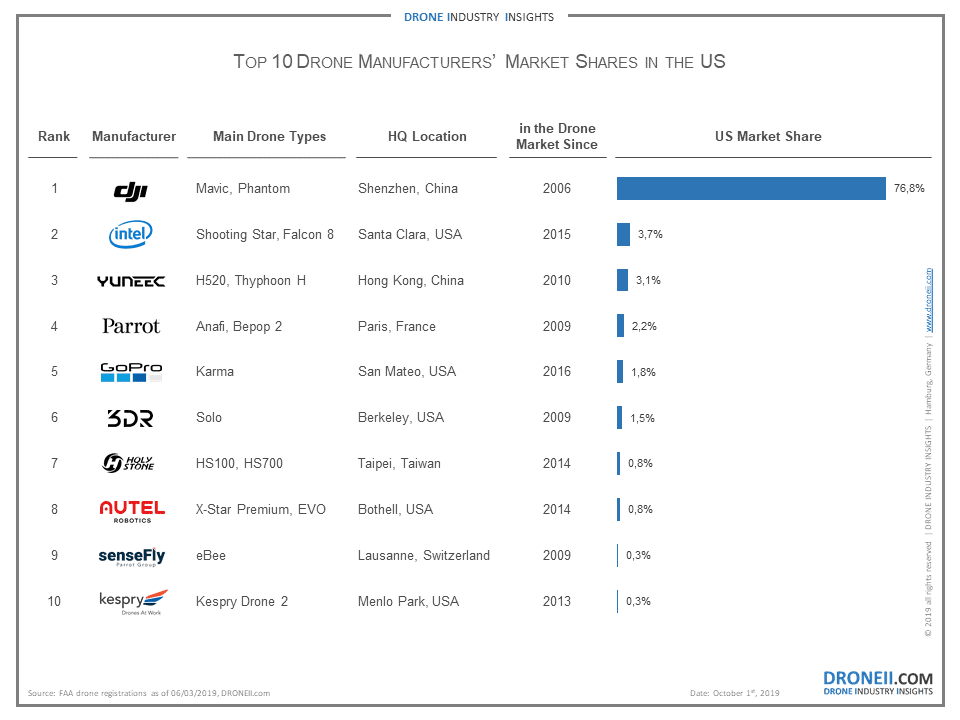
- DJI dominates the U.S. drone market with a 76.8% share, far ahead of every competitor.
- The rest are fragmented: Intel 3.7%, Yuneec 3.1%, Parrot 2.2%, GoPro 1.8%, 3DR 1.5%, Holy Stone and Autel Robotics 0.8% each, and senseFly and Kespry 0.3% apiece.
Dow Jones Industrial Average Statistics by Monthly Summary (2025)
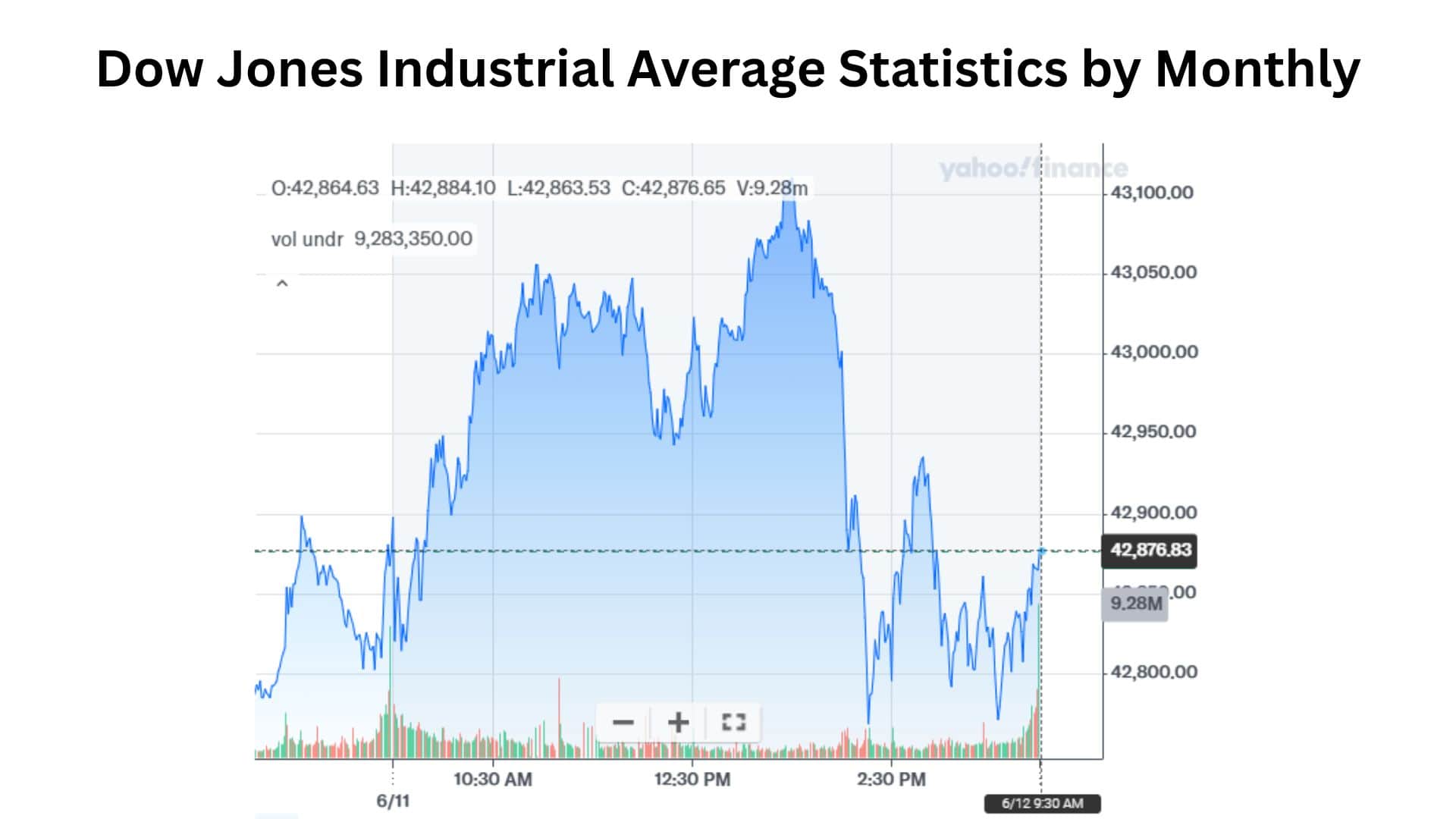
| Month | Open (USD) | High (USD) | Low (USD) | Close (USD) | Volume |
| January 1 | 42,660.09 | 45,054.36 | 41,844.49 | 44,544.66 | 12,074,770,000 |
| February 1 | 44,268.15 | 44,966.63 | 43,310.94 | 43,840.91 | 10,732,680,000 |
| March 1 | 43,900.49 | 44,033.78 | 40,661.77 | 41,006.76 | 13,790,900,000 |
| April 1 | 41,879.75 | 42,382.27 | 36,611.78 | 40,669.36 | 15,882,240,000 |
| May 1 | 40,918.04 | 42,842.04 | 40,705.63 | 42,270.07 | 11,882,010,000 |
| June 1 | 42,199.94 | 43,115.69 | 41,853.62 | 42,865.77 | 3,715,970,000 |
| June 11 | 42,882.90 | 43,115.69 | 42,738.62 | 42,865.77 | 467,269,111 |
Global Agriculture Drone Manufacturers
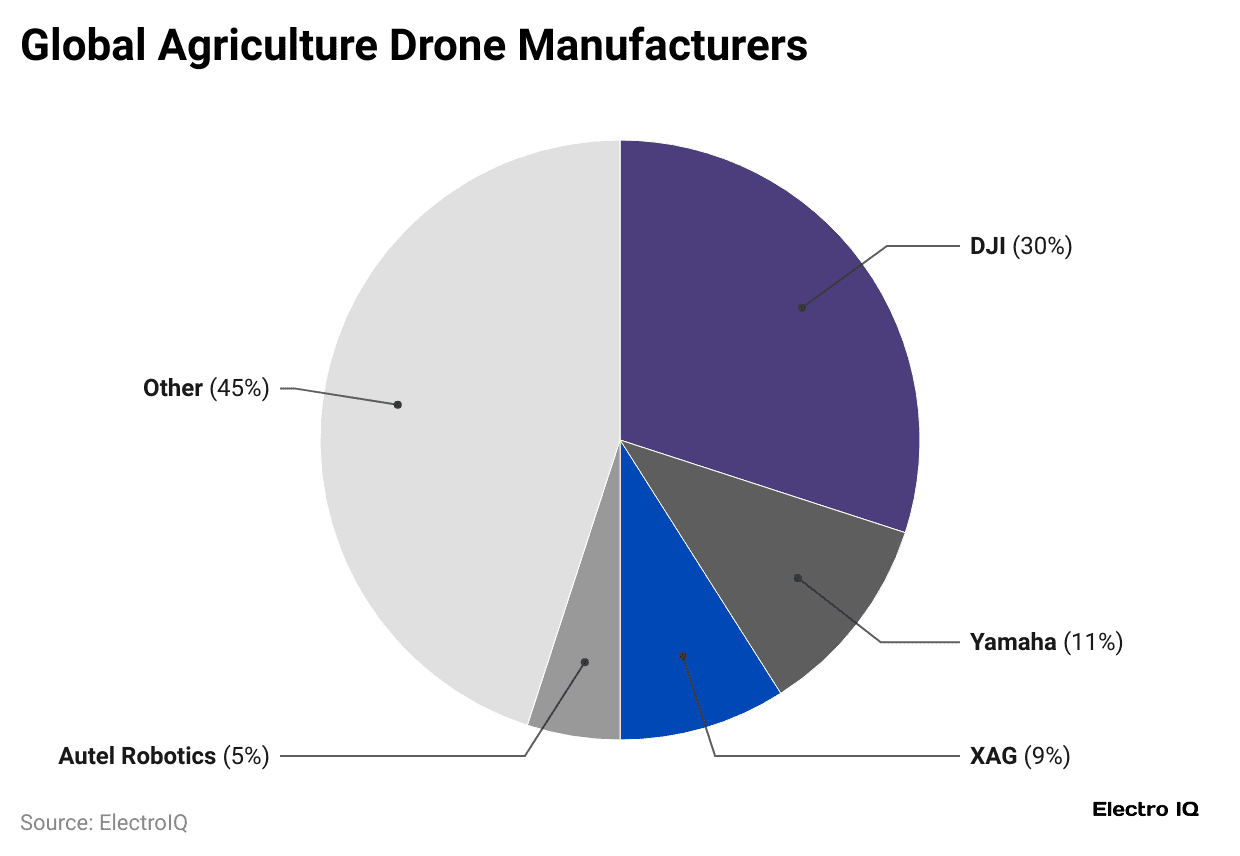
- In the 2024 agricultural drone market, DJI led with a 30% share.
- Yamaha, XAG, and Autel Robotics followed with 11%, 9%, and 5% respectively.
- All other brands combined accounted for the remaining 45%.
DJI Drones Price Statistics by Model
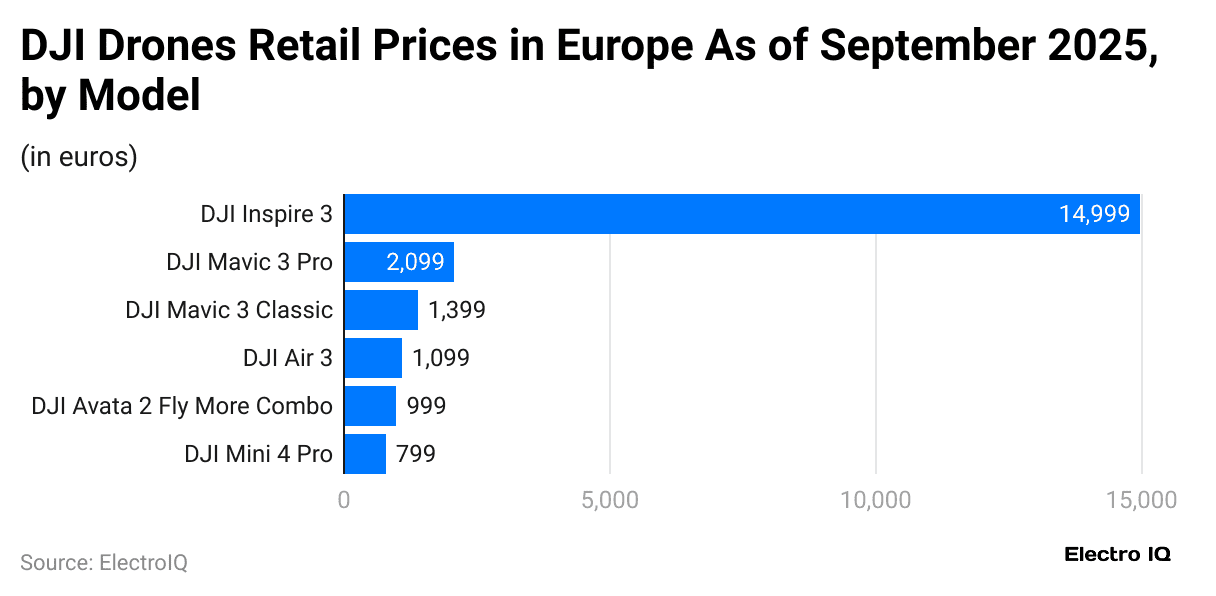
- The above graph illustrates that in Europe, the high-end DJI Inspire 3 model costs € 14,999 (approximately USD 16,198.92).
- Moreover, other drone models’ prices are DJI Mavic 3 Pro: €2,099 (USD 2,266.92), DJI Mavic 3 Classic: €1,399 (USD 1,510.92), DJI Air 3: €1,099 (USD 1,187), DJI Avata 2 Fly More Combo: €999 (USD 1,154.54), and DJI Mini 4 Pro: €799 (USD 862.92)
DJI’s Website Traffic Statistics
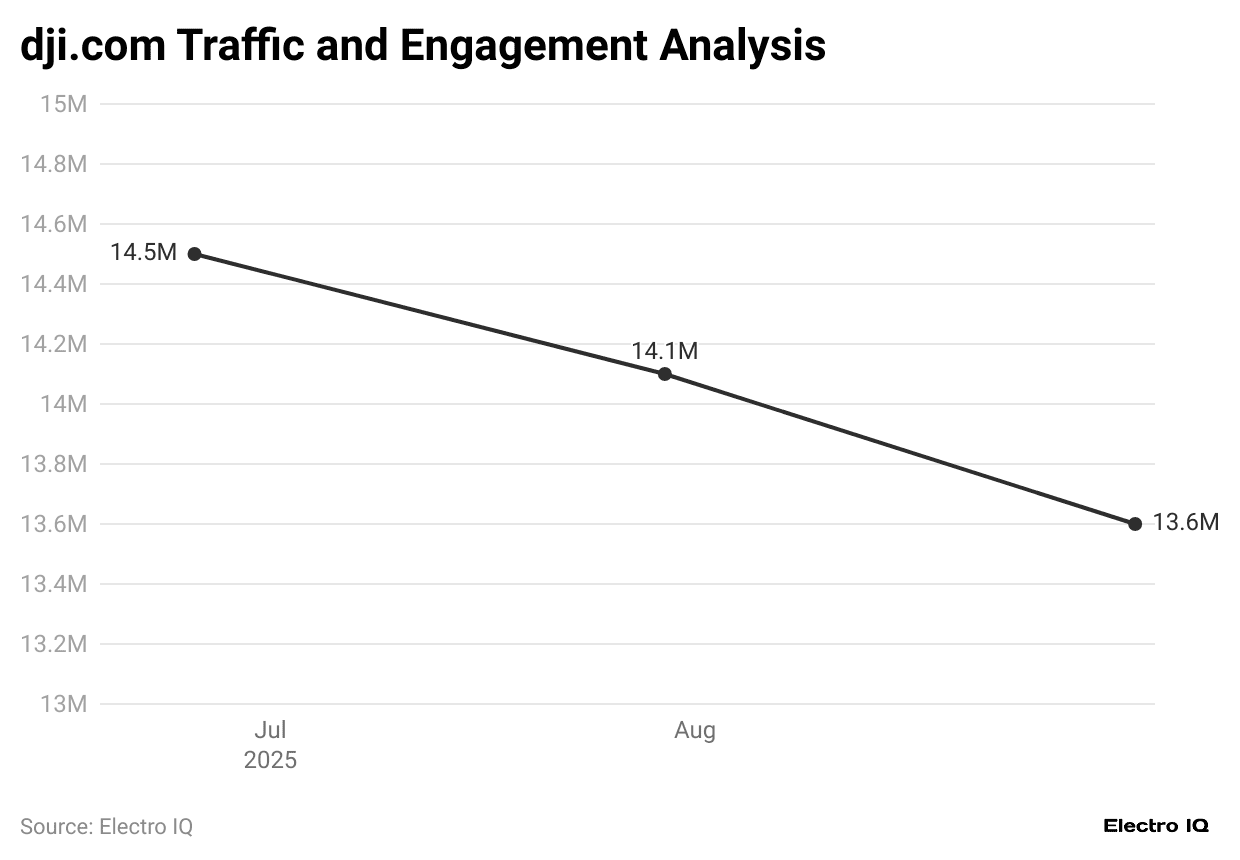
- As of September 2025, the total number of visits to dji.com accounted for 13.6 billion, down by 3.15% from the previous month.
- This website’s bounce rate was 35.39%
- Meanwhile, the average number of pages per visit was 4.44, and the average visit duration was 2 minutes and 47 seconds.
- Moreover, DJI’s website ranked #3,423 (globally), #520 (China), and #26 (within its category).
By Country
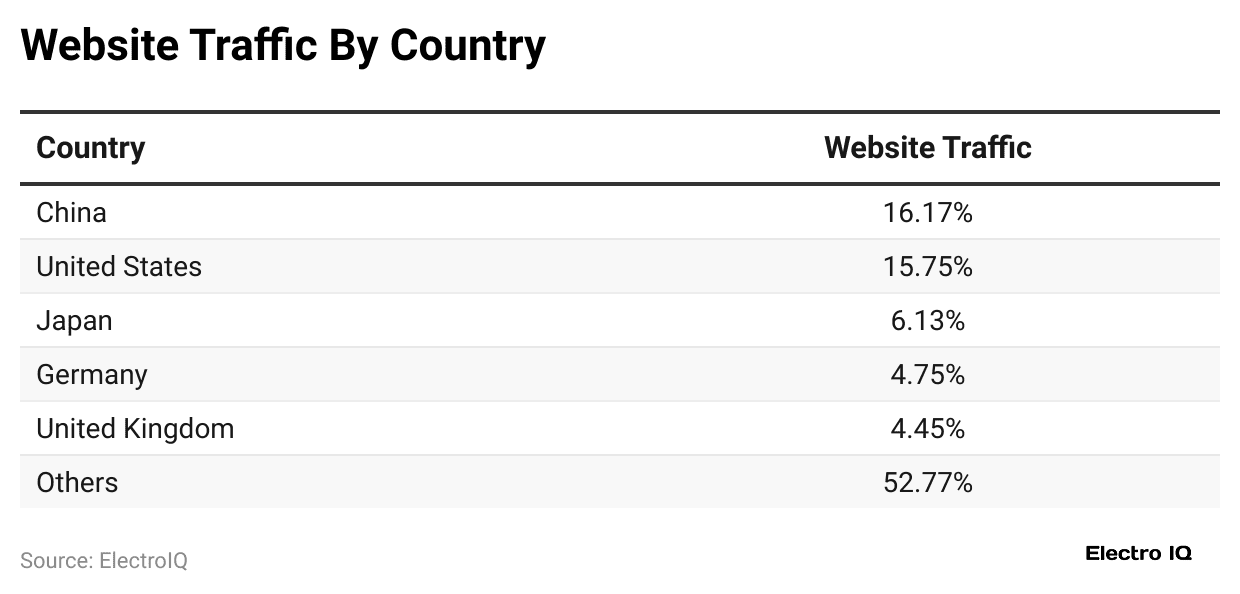
- As of September 2025, China accounted for the highest share of the DJI’s website, at 16.17%, representing a 6.77% decrease from the previous month.
- Website share followed by other top four countries are the United States: 15.75% (+0.71%), Japan: 6.13% (+14.7%), Germany: 4.75% (+0.75%), and the United Kingdom: 4.45% (+1.57%).
- The rest of the countries captured a share of 52.77% of the dji.com website traffic.
By User Demographics
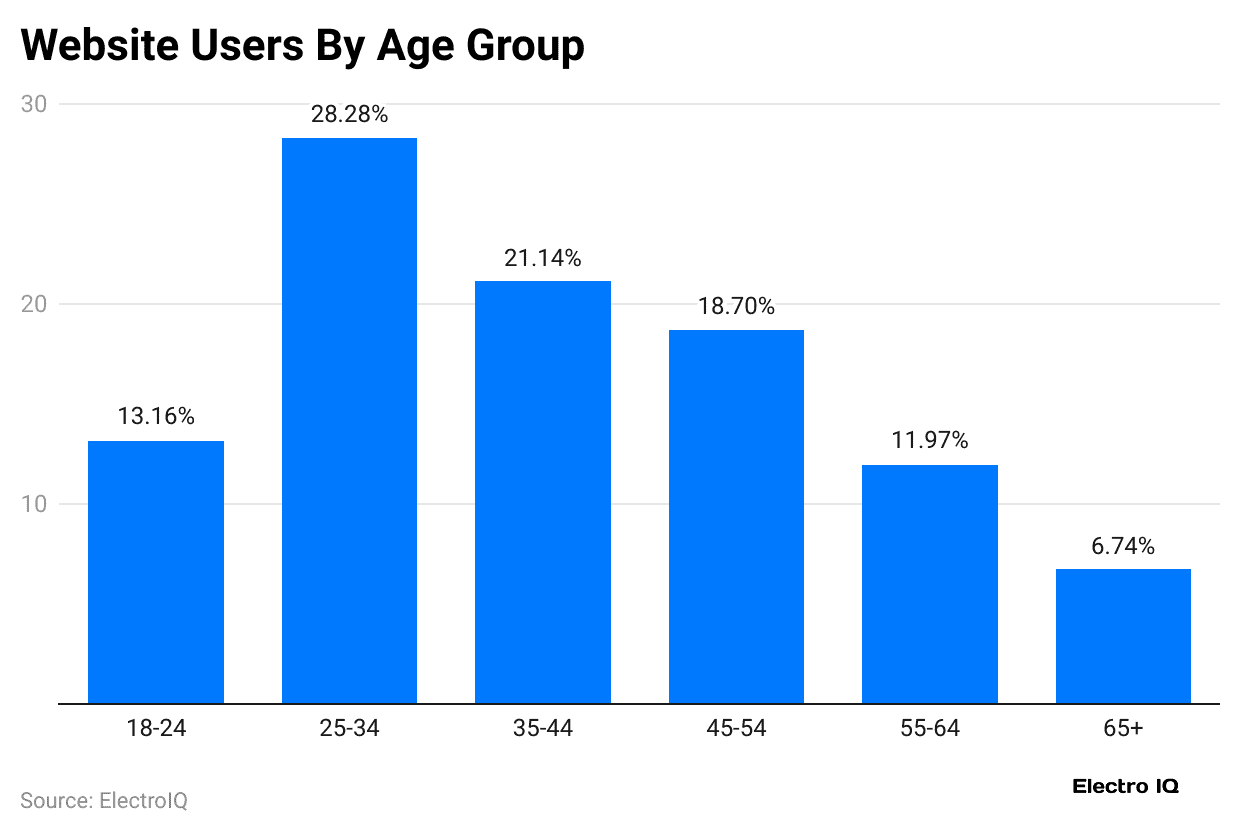
- The total number of DJI’s website users aged 25 to 34 years accounted for the highest share, at 28.28%, followed by those aged 35 to 44 years at 21.14%.
- Furthermore, the age distribution of other users is as follows: 45 to 54 years (18.7%), 18 to 24 years (13.16%), 55 to 64 years (11.97%), and 65+ years (6.74%).
- Based on gender, approximately 68.89% of DJI users were male, and 31.11% were female.
By Marketing Channels Distribution
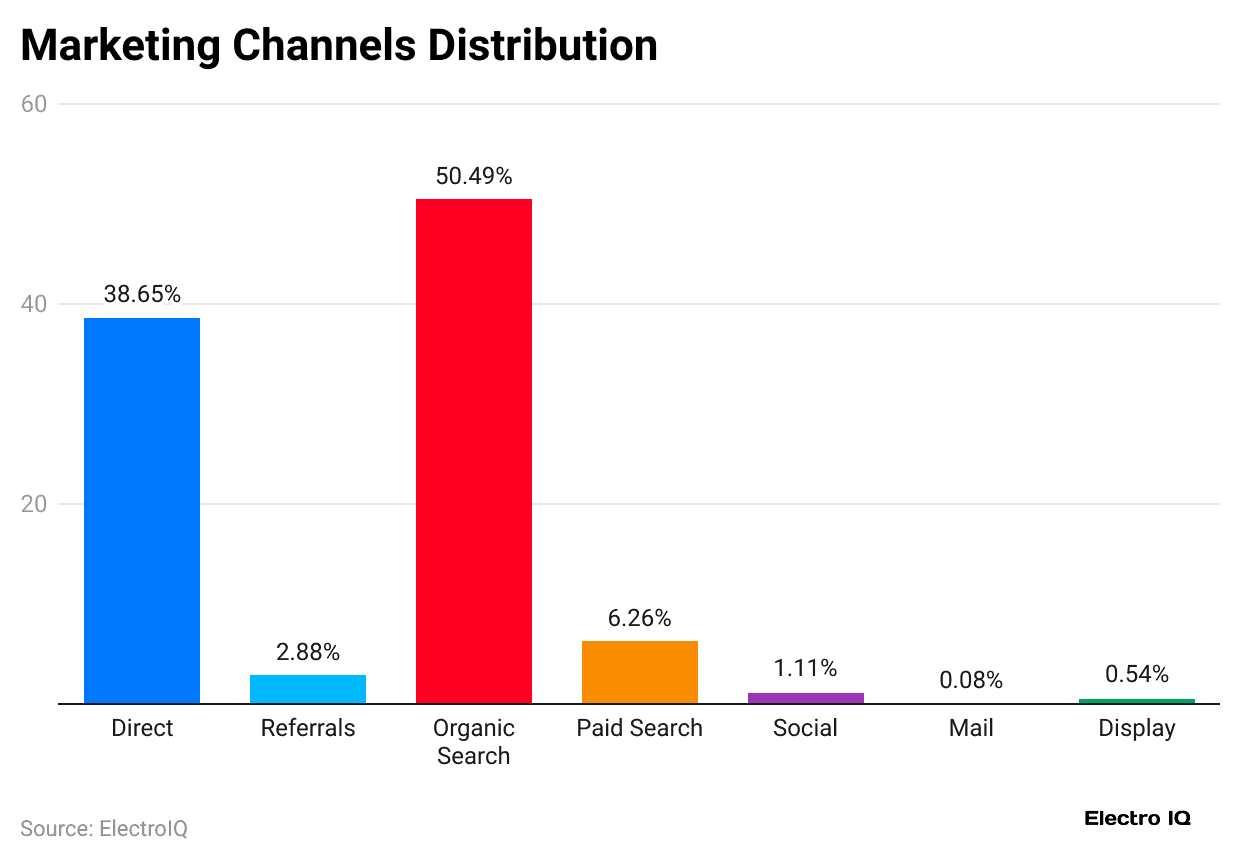
- The highest traffic sources for dji.com in the same period as above were captured by organic search with a share of 50.49%, followed by direct search (38.65%).
- Moreover, other marketing channel distributions are followed by referrals (2.88%), paid search (6.26%), social (1.11%), mail (0.08%), and display (0.54%).
By Social Media
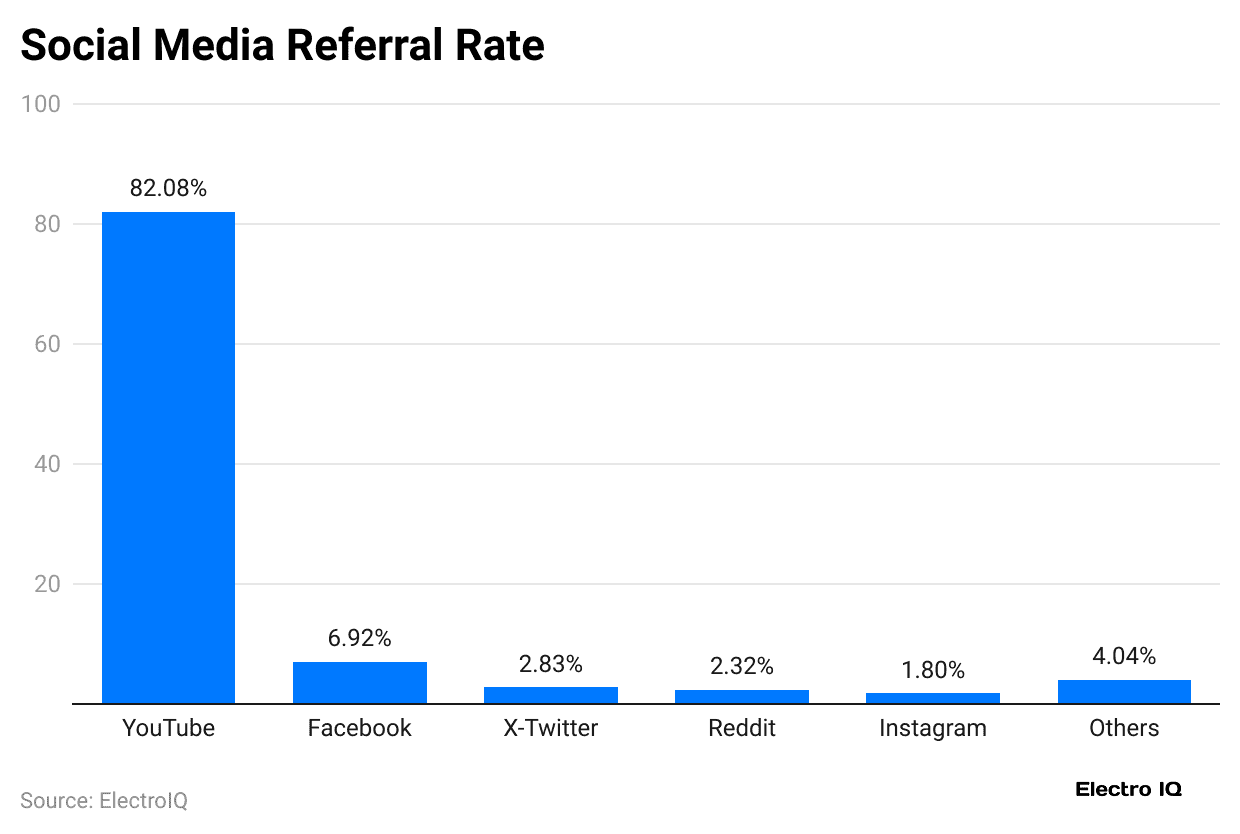
- On the DJI’s website, the highest social network traffic was accounted for by YouTube, with a share of 82.08%, followed by Facebook with 6.92%.
- Other social media traffic sources include X-twitter (2.83%), Reddit (2.32%), Instagram (1.8%), and others (4.04%).
By Device
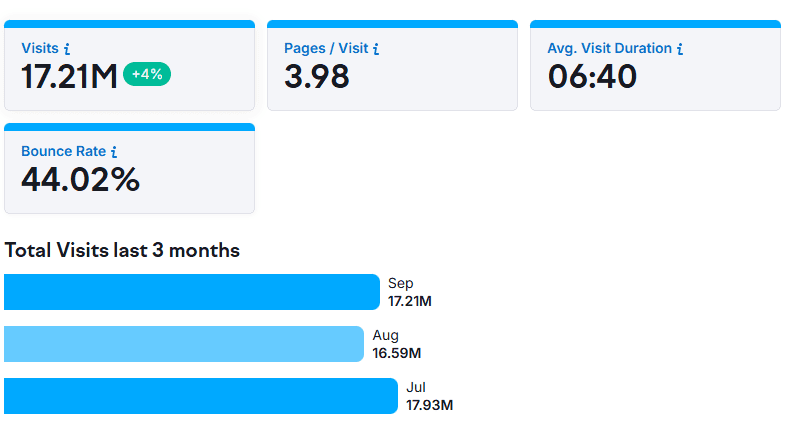 (Source: semrush.com)
(Source: semrush.com)
- The above graph states that dji.com received 17.21 billion visits in September 2025, with a bounce rate of 44.02%, as mentioned in Semrush.
- The average visit duration of the website was 6 minutes and 40 seconds, and the average number of pages per visit was 3.98.
- On dji.com, mobile devices generate 55.01% of visits, while desktops contribute 44.99%.
| Country | Visitor’s Share | All devices (Million) | Desktop | Mobile |
| United States | 20.11% | 3.46 | 40.73% | 59.27% |
| India | 6.48% | 1.12 | 15.78% | 84.22% |
| Germany | 6.35% | 1.09 | 47.96% | 52.04% |
| China | 6.06% | 1.04 | 99.99% | 0.01% |
| United Kingdom | 6.04% | 1.04 | 30.8% | 69.2% |
DJI Products Launch Analyses
| Products | Category | Launched Date (2025) | Features |
| DJI Flip | Mini vlog/drone | January 14 | <249 g mini drone; foldable full-coverage prop guards; palm takeoff; subject tracking. |
| Matrice 4 Series (4T/4E) | Enterprise drone | January 8 | New compact flagship enterprise series; multi-sensor; smart detection; laser range finder. |
| Osmo Mobile 7 / 7P | Smartphone gimbals | February 18 | 7th-gen 3-axis stabilization; ActiveTrack 7.0; up to ~10-hour operation (series); accessories module. |
| RS 4 Mini | Camera gimbal | February 20 | Compact/lightweight Ronin gimbal for mirrorless; creator/creator combo kits. |
| Mavic 4 Pro | Flagship camera drone | May 13 | 100MP Hasselblad main cam; Infinity Gimbal (360° rotation); up to 51-min flight; broad global launch excluding U.S. |
| Matrice 400 | Enterprise drone | June 10 | 59-min max flight; 6 kg payload; LiDAR + mmWave obstacle sensing; O4 Enterprise video link. |
| Osmo 360 | 360° action camera | July 31 | Dual 1-inch sensors; native 8K 360° video; up to 100 min at 8K/30. |
| DJI Mic 3 | Wireless audio | August 28 | Up to 4 TX + 8 RX workflows; timecode; dual-band anti-interference; 32-bit float internal recording. |
Conclusion
DJI moved drones from hobby toys to tools for filmmakers, creators, surveyors, and emergency teams. Its strengths are steady flight, smart features, and a rich set of apps and add-ons. Start with your goal: local rules, weight class, needed resolution, flight time, wind, and data workflow.
Mini or Air fits travel; Mavic, Inspire, and Enterprise bring bigger sensors and flexible payloads. Plan for extra batteries, props, ND filters, and training. Update firmware, fly legally, and focus on telling the story.
Sources
FAQ.
Begin small with Mini/Air: light, affordable flyers. Upgrade to Mavic/Inspire/Enterprise for bigger sensors and features.
Many countries require pilot registration, basic tests, or Remote ID. Check your local aviation rules before flying.
DJI geofencing warns or blocks takeoff in sensitive zones. You can request unlocking in some regions with proper authorisation.
It’s a digital “license plate” broadcast by the drone so authorities can identify it in flight, where required by law.
Typical flight time is 20 to 45 minutes per battery, depending on wind, payload, and flying style.

Maitrayee Dey has a background in Electrical Engineering and has worked in various technical roles before transitioning to writing. Specializing in technology and Artificial Intelligence, she has served as an Academic Research Analyst and Freelance Writer, particularly focusing on education and healthcare in Australia. Maitrayee's lifelong passions for writing and painting led her to pursue a full-time writing career. She is also the creator of a cooking YouTube channel, where she shares her culinary adventures. At Smartphone Thoughts, Maitrayee brings her expertise in technology to provide in-depth smartphone reviews and app-related statistics, making complex topics easy to understand for all readers.

